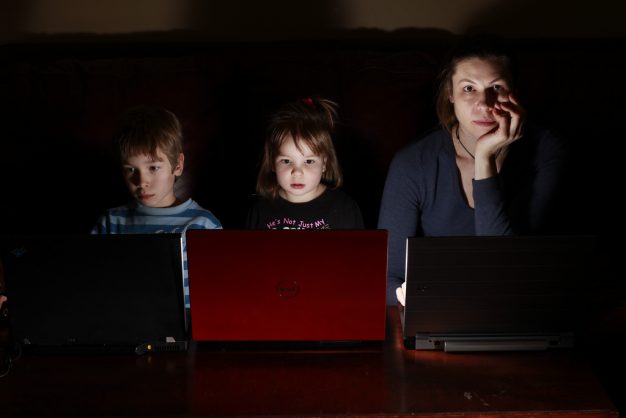
EU: A new strategy to protect and empower children in the online world
The European Commission has adopted a new European strategy for a Better Internet for Kids (BIK+), aimed at improving age-appropriate digital services and ensuring all children are protected, empowered and respected online.
Digital technologies – and how children have used them – have changed dramatically over the past decade, with most children and young people using their smartphones for hours at a time every day, and almost twice as much as a decade ago.
They also use them from a much younger age, while devices also bring opportunities and benefits, allowing children to interact with others, learn online and be entertained. But with these gains come, inevitably, a number of risks that cannot be ignored. Chief ones include the dangers of exposure to disinformation, cyberbullying and harmful and illegal content, from which children need to be sheltered.
This new strategy is designed to bring about more accessible, age-appropriate and informative online content and services that are in children’s best interests. Margrethe Vestager, Executive Vice-President for a Europe fit for the Digital Age, said: “Every child in Europe deserves to thrive in a safe and empowering digital environment. With the new strategy, we want to support access to digital devices and skills for children, especially those in vulnerable situations, fight cyberbullying, and protect all children from harmful and illegal online content. This is in line with our core values and digital principles.”
‘…will ensure that children enjoy the same rights online and offline’
Dubravka Šuica, Vice-President for Democracy and Demography, said: “The new strategy for a Better Internet for Kids will ensure that children enjoy the same rights online and offline, with no child left behind regardless of their geographical, economic and personal background. All children must be protected, empowered and respected online. With this strategy we are also setting high safety standards and are promoting children’s empowerment and active participation in the digital decade across the world.”
The new European strategy for a Better Internet for Kids is the digital arm of the Commission’s comprehensive EU strategy on the rights of the child and reflects the digital principle ‘Children and young people should be protected and empowered online’. It has been adopted alongside a proposal for new EU legislation to protect children against sexual abuse.
It also follows the recent landmark provisional political agreement on the Digital Services Act (DSA), which contains new safeguards for the protection of minors and prohibits online platforms from displaying targeted advertising based on profiling to minors.
Thierry Breton, Commissioner for Internal Market, said: “Europe’s Digital Decade offers great opportunities to children, but technology can also pose risks. With the new strategy for a Better Internet for Kids, we are providing kids with the competences and tools to navigate the digital world safely and confidently. We call upon industry to play its part in creating a safe, age-appropriate digital environment for children in respect of EU rules.”
‘Safe digital experiences’
The issues were also debated at the recent Conference on the Future of Europe, where the European Citizens Panel dealing with Values and Rights called for increased protection of minors online. This was endorsed up by the Conference Plenary and is included in a Proposal contained in the Final Report of the Conference that was presented to the Presidents of the European Parliament, the Council and the European Commission.
Strategy principles and pillars
The new European strategy for a Better Internet for Kids sets out the vision for a Digital Decade for children and youth, based on three key pillars:
- Safe digital experiences, protecting children from harmful and illegal online content, conduct, and risks and improving their well-being through a safe, age-appropriate digital environment.
To make the digital world a safe place for children and young people, the Commission will facilitate an EU code for age-appropriate design and request a European standard on online age verification by 2024. It will also explore how to use the planned European Digital Identity wallet for age verification, support the swift reporting of illegal and harmful content and ensure the single harmonised number ‘116 111′ provides assistance to victims of cyberbullying, by 2023.
- Digital empowerment so that children acquire the necessary skills and competences to make informed choices and express themselves in the online environment safely and responsibly.
In view of fostering the empowerment of children in the digital environment, the Commission will organise media literacy campaigns for children, teachers and parents, via the network of Safer Internet Centres, the backbone of the strategy. It will also provide teaching modules for teachers via the betterinternetforkids.eu portal. The network of Safer Internet Centres in Member States, active at national and local level, will strengthen support for children in vulnerable situations and help address the digital divide for skills.
- Active participation, respecting children by giving them a say in the digital environment, with more child-led activities to foster innovative and creative safe digital experiences.
To increase children’s participation in the digital environment, the Commission will, for instance, support more experienced children teaching other children about online opportunities and risks, as well as organise a child-led evaluation of the strategy every two years.
The strategy also builds on the European Strategy for a Better Internet for Children adopted in 2012. This has already influenced national policies across the EU and has been recognised internationally: for instance, the annual Safer Internet Day is celebrated worldwide. Actions aimed at fighting fake news, cyberbullying and exposure to harmful and illegal content are reaching thousands of schools and millions of children, parents and teachers every year.
In 2021 the EU canvassed the views of around 750 children and young people on online safety, content and skills, at some 70 consultation sessions in Safer Internet Centres across Europe. Feedback showed that children and young people often understand well online risks, such as harmful content, cyberbullying or disinformation, and opportunities.
They also wish to have their voice heard in matters concerning them. However, many children and young people in Europe, especially those in vulnerable situations, are still not fully included in the digital world. Factors behind this exclusion include poverty, lack of connectivity, lack of suitable devices, and lack of digital skills or confidence.
Click here for more information on the strategy.




